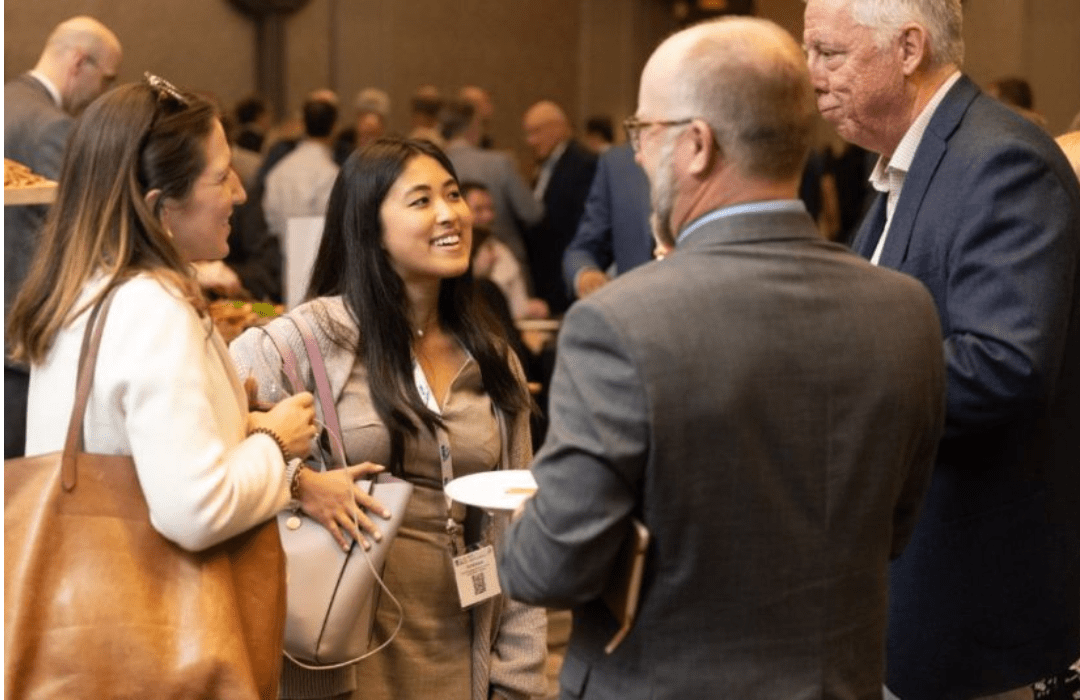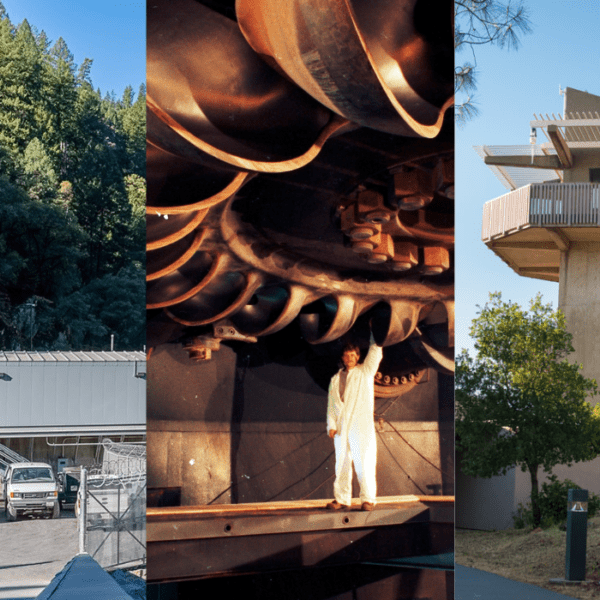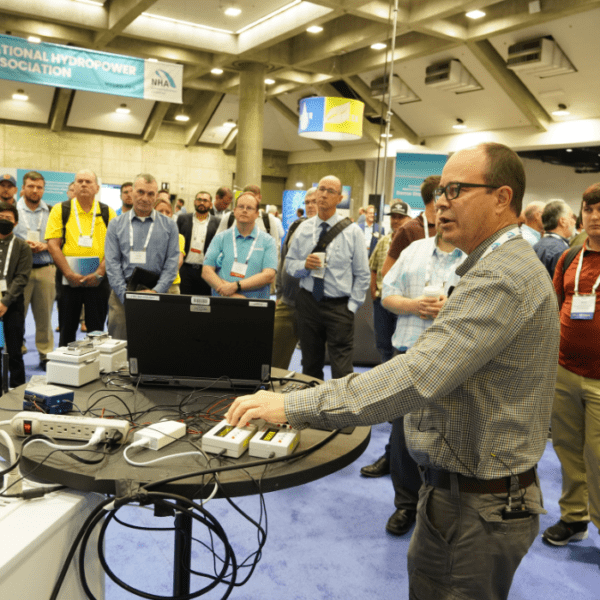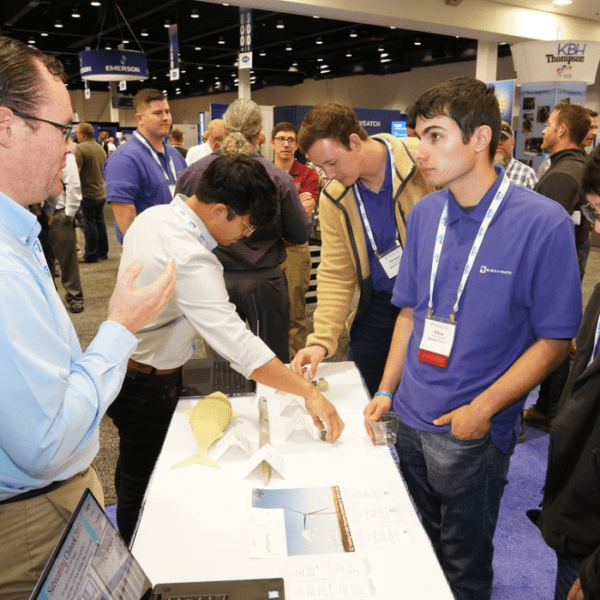*Editor’s Note: This interview originally appeared in Hydro Leader, which you can read here.
The National Hydropower Association (NHA) will be holding its industry-wide Clean Currents 2023 trade show and conference from October 10-13 in Cincinnati, Ohio. Marla Barnes, NHA’s vice president of membership and industry engagement, gives us a preview of what makes this “by the industry, for the industry” event unique and valuable.
Hydro Leader: Please introduce NHA.
Marla Barnes: NHA is the national trade association in the United States that focuses on championing waterpower in all its forms. We have three main missions.
First, we advocate for the waterpower resource with Congress, with policymakers, and with wholesale electricity markets designers, pushing to get tax credits, stronger certainty in licensing, inclusion in wholesale electricity market design, and so on.
Second, we connect employees of our more than 300 member organizations with other waterpower professionals to create forums for learning from each other, doing business together, and networking. The national and regional events we offer is one important way we provide these opportunities to connect.
Third, we inform not only our member organizations, but the industry at large and those affecting the industry, on both policy and technical developments, helping them understand why these developments matter to them and their work. We do that not only through our online POWERHOUSE media platform but through our entire NHA committee and council structure. We aim to be the place people can go for inside knowledge about what matters to them in in the work that they do.
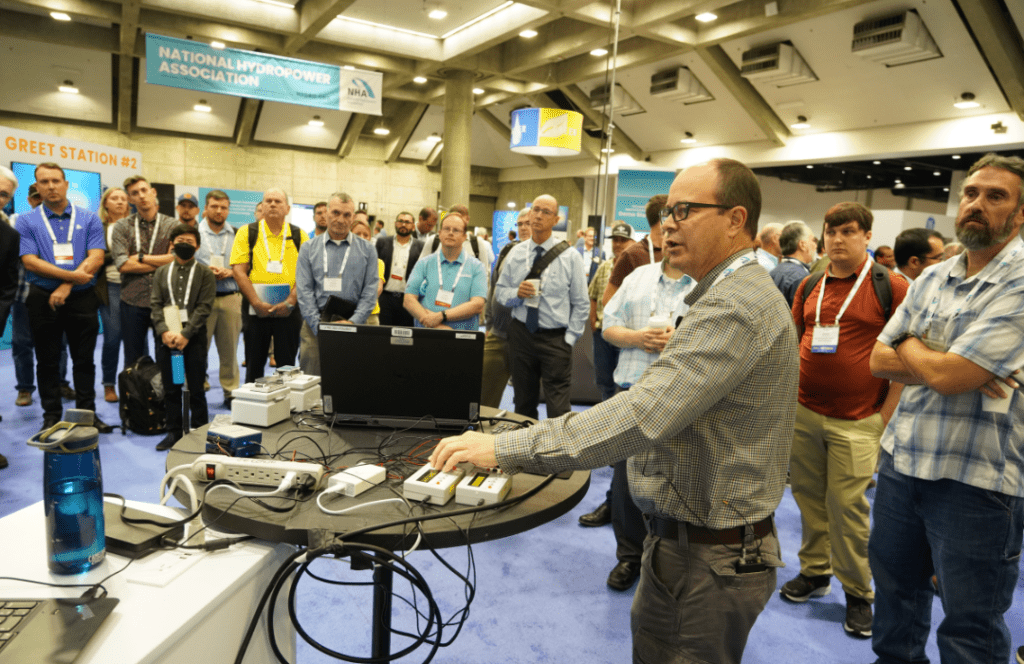
Hydro Leader: Please tell us about NHA’s Clean Currents conference and trade show and what makes it distinctive among other industry conferences and events.
Marla Barnes: Several years ago, the NHA board of directors decided it was crucial for the non-profit national trade association in the waterpower industry to hold its own conference and tradeshow, allowing the industry to control the format and content and enabling 100% of the revenue to be reinvested into industry advocacy, as opposed to going to a for-profit private events company. There are lots of conferences and trade shows out there, but there are two things that make Clean Currents unique.
First, it’s for the industry, by the industry. It’s not run by a private company; rather, it’s organized with extensive input from NHA member organizations, exhibiting companies, and others. The industry as a whole provides ideas about content, about the most useful and productive setup for the exhibit hall, and about speakers and activities.
Second, Clean Currents provides an opportunity to raise funds for the work of the NHA. The board recognized that to do the work that it was asking the association to do to move waterpower forward, there needed to be more available capital. Those additional funds can’t always be raised by increasing membership dues. We saw in the new event an opportunity to create what we call non-dues revenue that would go right back into the association. If a company is going to participate in an event, it makes sense to do so at an event at which that investment goes straight into the work of advocating for the industry.
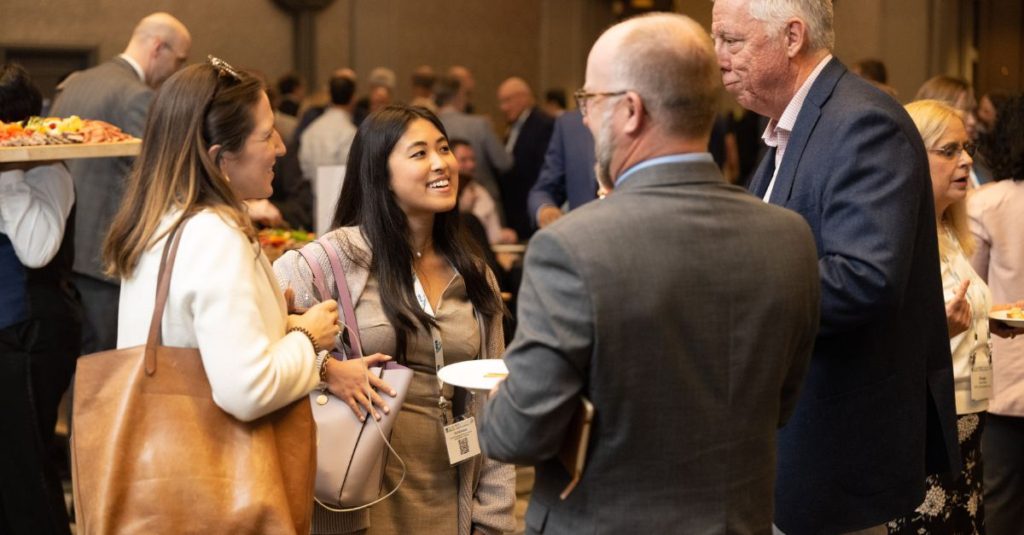
Hydro Leader: Please tell us about this year’s Clean Currents in terms of its unique format.
Marla Barnes: One unique aspect of Clean Currents is that, instead of having a traditional exhibit hall and then holding conference sessions in a completely different part of the building, it has a integrated community feel. In some conferences, people leave the exhibit hall, go to the sessions, and sometimes never get back to the exhibit hall. To avoid that, we replaced the exhibit hall with a central location where everything happens, which we call CC Central. CC Central includes both the exhibits and the areas for content. The session areas are purpose-built, and they surround the exhibits.
Once attendees enter CC Central, they can do anything they want. All attendees have access to everything – lunches, conference content, etc. The integrated space also creates the opportunity for people to pick and choose the things they want to participate in and to do that in a time-efficient way.
We tried that approach at the inaugural event in Atlanta in 2021, and the attendees responded very favorably. There are certain logistical challenges to holding conference sessions in the same space as the exhibits, and we’re learning to address those from the inaugural experience. In Cincinnati, not only are we continuing the same approach, but we’re executing it even better than we did in Atlanta.
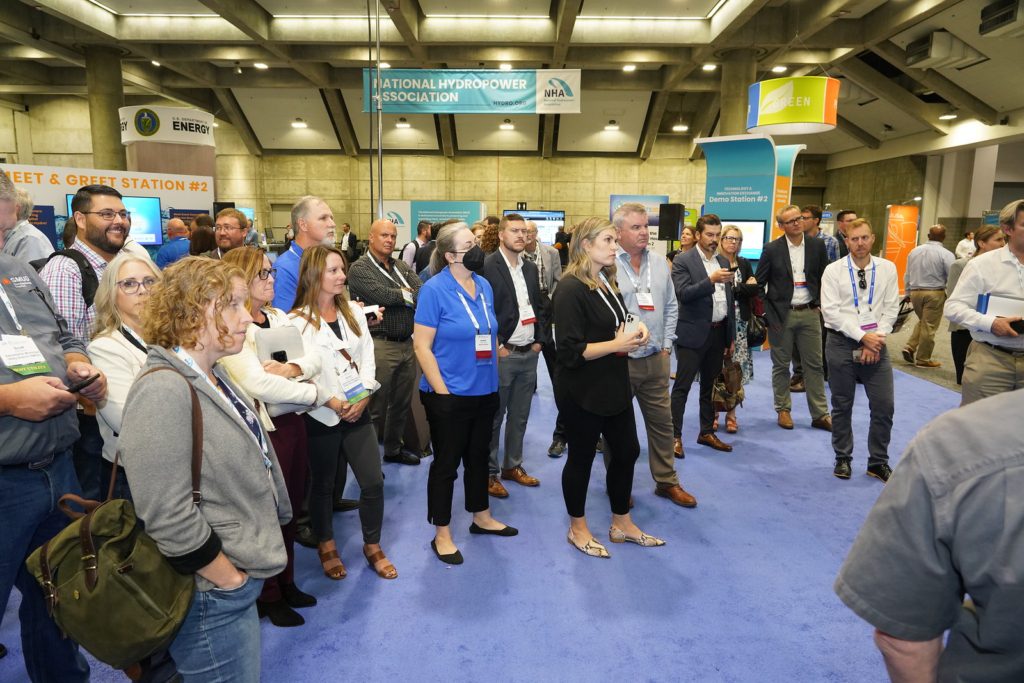
Hydro Leader: Does the conference this year focus on specific themes? If so, how did you generate those ideas?
Marla Barnes: We have a robust content development committee made up of about 50 people coming from all walks of life in the industry: asset owners, service and product suppliers, project developers, technology developers, regulators, and employees of government agencies and non-governmental organizations. This group of people, with a lot of different views and perspectives, has been working on content and topic identification. In the course of their everyday work, they see and hear the issues and topics that people are struggling with or that people need more information about. This drives the content of the event.
The other thing that is unique about Clean Current is that instead of organizing the session rooms by tracks of content, they are organized by learning format. We all don’t learn the same way, so instead of having all rooms set up according to the same format, we offer a variety. For example, we have an area called the Roundtable Dialogue room. In that session, there are no formally designated speakers. There is a facilitator who leads an informal discussion with the attendees about a particular topic, such as supply chain challenges or workforce shortages. The participants attending these sessions dialogue with one other about how they are dealing with the challenges of the particular topic and what is working for them. We also have more traditional formats, such as classroom presentations where attendees sit in a room and listen to a presenter.
One useful and unique format we offer in CC Central is an area called the Innovation Power House. We’re trying to get people to think creatively about technology and applications from other industries—for instance, advanced manufacturing, robotics, and artificial intelligence—that may not be used right now in the waterpower industry but have the potential for adaptation. There are so many technologies out there that could create phenomenal efficiencies and cost savings if this industry could learn about them, adapt them, and begin to use them.
Another area is the Asset Owner Meet and Greet. It’s an informal setup – attendees stand around a presenter, who is standing next to a kiosk. The presenter is basically interacting with attendees via short snippets of content.
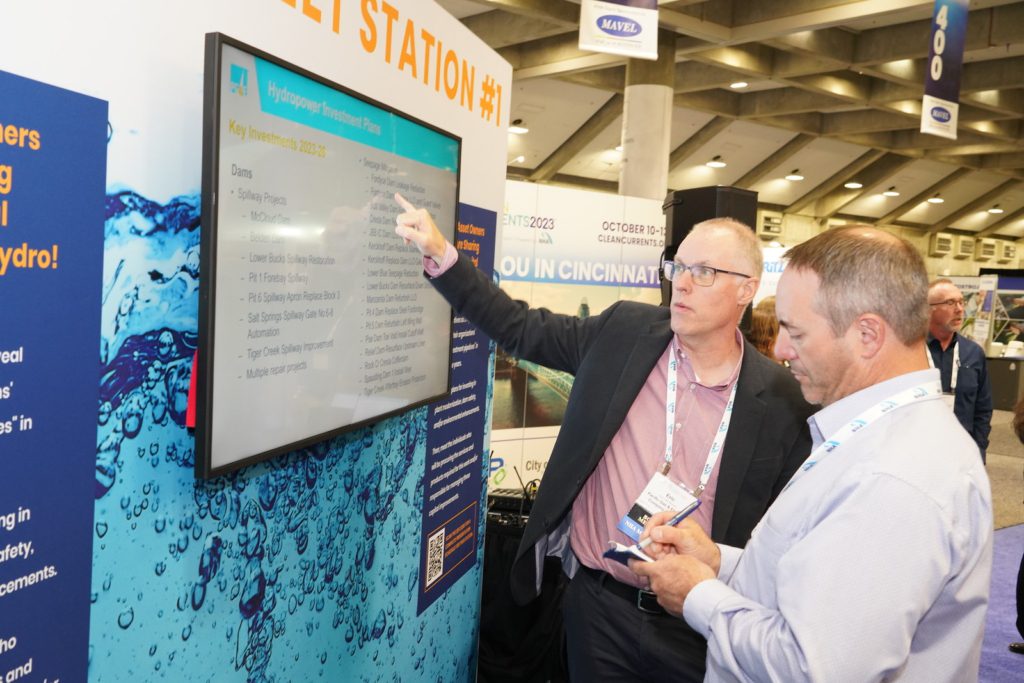
Hydro Leader: What kind of audiences do you expect at Clean Currents, and how do you develop content for them?
Marla Barnes: It’s a little flippant to say we’re trying to do something for everybody, but we really are trying to be thoughtful about the learning needs of specific segments of the sector. One of those audiences, of course, is the decision makers, whether at the executive level, the engineering level, or the plant operations level. The more we learn about their needs, the better we can make sure that the Clean Currents event fills those needs and thus attracts those decision makers to Clean Currents.
At last year’s Clean Currents event, 39% of all attendees were leaders, decision makers, or influencers within their organizations. We expect that same kind of audience this year.
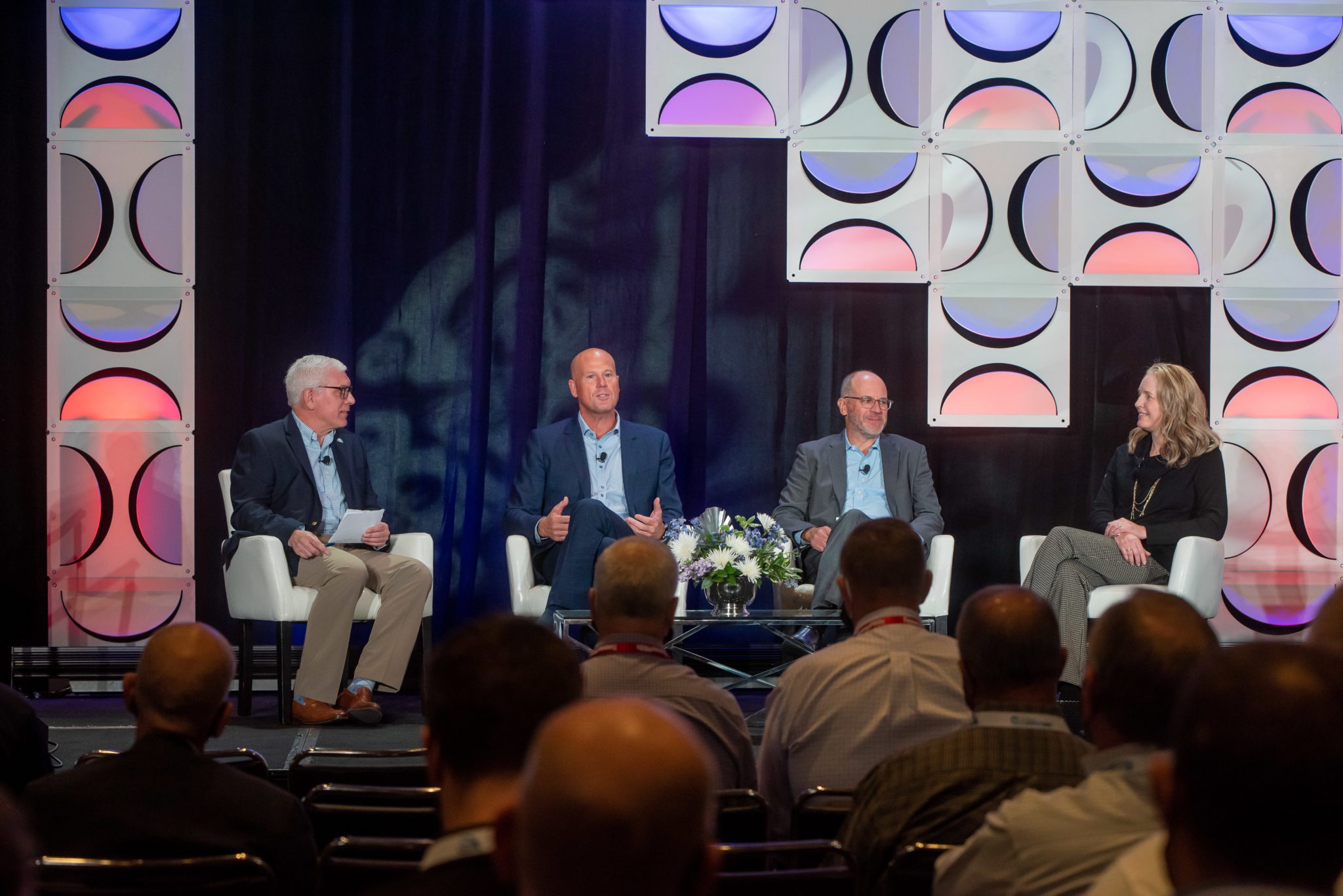
Hydro Leader: What should every hydro industry professional know about this event?
Marla Barnes: The commitment that we’re seeing to this event from the three utilities – American Munipal Power (AMP), City Of Hamilton, and Duke Energy – is really remarkable.
During Clean Currents, executives from AMP and Duke Energy will be sharing their views about the future, their challenges, and the opportunities they see. Hydro is at an amazingly important spot in our overall electricity supply industry, and the host utilities will offer insights gleaned from their perspectives.
By coming to Clean Currents, whether as an attendee, an exhibitor, a sponsor, or a speaker, you’re going to have an opportunity to learn about the future and where we as an industry can fit into the drive to a clean energy grid. Hydro has a great future, and it’s a great industry to be working in, especially if you’re just starting your career.
We hope that the enthusiasm about the importance of the industry and the sector will really grow in Cincinnati.
We encourage people to come and be a part of it.
Marla Barnes is the vice president of membership and industry engagement at the National Hydropower Association. She can be contacted at marla@hydro.org; 816-588-4639.



